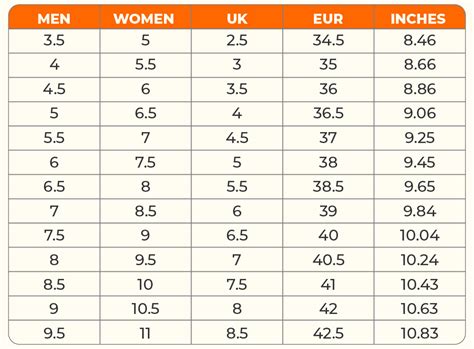Steel Safety Boots Protection

The importance of safety boots in various industries cannot be overstated, as they provide a critical layer of protection against numerous workplace hazards. Steel safety boots, in particular, have become a staple in many professions due to their exceptional durability and ability to safeguard against a wide range of threats. From construction and manufacturing to oil and gas, and even in certain roles within the military, steel safety boots are donned by individuals who require robust protection for their feet.
Historical Evolution of Safety Boots
The concept of safety boots has evolved significantly over the years. Initially, safety boots were simple, sturdy leather footwear designed to protect workers’ feet from heavy objects and rough surfaces. However, as industries evolved and new hazards emerged, the design and materials used in safety boots also underwent transformation. The introduction of steel in the form of toe caps marked a significant milestone in this evolution. Steel toe caps provided enhanced protection against heavy falling objects and compression. Over time, with advancements in technology, safety boots began to incorporate a variety of other protective features, including midsoles for puncture protection, better insulation for extreme temperatures, and slip-resistant outsoles.
Technical Breakdown of Steel Safety Boots
Steel safety boots are engineered with several key components designed to provide comprehensive protection.
Steel Toe Cap: The steel toe cap is the most recognizable feature of steel safety boots. Made from sturdy steel, it protects the toes from heavy objects that might fall on them. The steel used is typically of high strength and durability but is also designed to be lightweight to ensure comfort during long working hours.
Midsole Protection: In addition to the steel toe cap, many steel safety boots include a midsole that offers protection against punctures from sharp objects. This is often made from a penetrating-resistant material, ensuring that if a sharp object were to penetrate the outsole, it would be stopped before it could cause injury.
Outsole: The outsole of steel safety boots is designed to be slip-resistant and durable. Made from high-quality rubber or other synthetic materials, it provides traction on various surfaces, reducing the risk of slips, trips, and falls. The tread pattern is carefully designed to ensure maximum grip in wet, oily, or dry conditions.
Upper Material: The upper part of the boot can be made from a variety of materials, including leather, suede, or synthetic fabrics. Leather is a popular choice due to its durability, breathability, and resistance to certain chemicals. The upper material is designed to be durable and to provide additional protection against cuts and abrasions.
Breathability and Comfort: Modern steel safety boots often incorporate features that enhance wearer comfort, such as breathable membranes (like Gore-Tex) that keep feet dry and cool, and cushioning that absorbs shock and reduces fatigue.
Problem-Solution Framework: Common Hazards and Solutions
Several hazards exist in workplaces that necessitate the use of steel safety boots.
Falling Objects: One of the most common hazards in construction, manufacturing, and warehouse environments is the risk of objects falling onto workers’ feet. Steel safety boots provide the necessary protection against such incidents.
Slip, Trip, and Fall Hazards: Slippery floors, uneven surfaces, and obstacles can lead to slips, trips, and falls. The slip-resistant outsoles of steel safety boots offer a solution by providing traction on various surfaces.
Puncture Wounds: In environments where sharp objects are prevalent, the risk of puncture wounds to the feet is significant. The midsole protection in steel safety boots addresses this issue by preventing sharp objects from penetrating the boot.
Extreme Temperatures: Workers in certain industries may be exposed to extreme temperatures, either hot or cold. Insulated steel safety boots can provide protection against these conditions, keeping feet warm in cold environments and cool in hot ones.
Comparative Analysis: Steel vs. Composite Safety Boots
The choice between steel and composite safety boots depends on several factors, including the nature of the work, personal preference, and specific safety regulations.
Steel Safety Boots: These are the traditional choice and offer excellent protection against heavy impacts and compression. However, they can be heavier and may not be as comfortable in certain conditions due to the conductive nature of steel.
Composite Safety Boots: Made from materials like carbon fiber, fiberglass, or plastic, composite safety boots are lighter and can provide similar protection to steel while being more comfortable and less conductive. They are also often more expensive than their steel counterparts.
Future Trends Projection: Innovation in Safety Boots
The future of safety boots is poised for significant innovation, driven by advances in materials science and technology.
Advanced Materials: Researchers are continually developing new materials that are stronger, lighter, and more versatile. These materials could lead to safety boots that offer enhanced protection without the added weight or discomfort.
Smart Safety Boots: The integration of technology into safety boots is becoming more prevalent. Features like impact detection, temperature regulation, and even GPS tracking could become standard in the future, enhancing both safety and comfort.
Customization: With advancements in manufacturing technologies like 3D printing, it may become possible to customize safety boots to individual foot shapes and specific job requirements, providing a perfect fit and optimal protection.
Expert Interview Insights
According to safety experts, the selection of appropriate safety footwear is critical and should be based on a thorough hazard assessment of the workplace. “It’s not just about meeting the safety standards; it’s about ensuring that every aspect of the boot, from the materials used to the design features, aligns with the specific hazards faced by the worker,” emphasized one expert. The importance of regular maintenance and inspection of safety boots was also highlighted, as wear and tear can compromise the protective features of the boot.
Resource Guide: Selecting the Right Steel Safety Boots
When selecting steel safety boots, several factors should be considered:
Work Environment: Understand the specific hazards present in your workplace. Is there a risk of heavy objects falling, or are slip hazards more common? This will help in choosing the right features.
Comfort: Since safety boots are worn for extended periods, comfort is crucial. Look for breathable materials, cushioning, and a comfortable fit.
Durability: The boots should be durable and able to withstand the demands of your work environment.
Regulations: Ensure that the boots meet or exceed relevant safety standards for your industry.
Brand and Quality: Research the brand and read reviews to ensure you are purchasing high-quality boots that will provide the protection you need.
FAQ Section
What are the primary hazards that steel safety boots protect against?
+Steel safety boots primarily protect against falling objects, puncture wounds, and slips, trips, and falls. They are designed to safeguard the feet from various workplace hazards, ensuring safety and reducing the risk of injuries.
How do I choose the right steel safety boots for my job?
+Choosing the right steel safety boots involves considering the specific hazards of your workplace, the comfort and durability of the boots, and ensuring they meet relevant safety standards. It's also important to select boots that fit well and are appropriate for the demands of your job.
What are the advantages of steel safety boots over composite safety boots?
+Steel safety boots offer excellent protection against heavy impacts and compression, and they are often more cost-effective than composite boots. However, composite boots can be lighter and more comfortable, and they may be preferred in certain situations where the weight and conductivity of steel are concerns.
How often should steel safety boots be replaced?
+The frequency of replacing steel safety boots depends on usage and condition. Generally, boots should be inspected regularly for signs of wear and tear, and replaced if they show significant deterioration or if they no longer provide adequate protection.
Can steel safety boots be customized for specific jobs or foot shapes?
+While standard steel safety boots are designed to fit a wide range of foot shapes and job requirements, advancements in manufacturing are making it possible to customize safety boots for specific needs. This includes customization for individual foot shapes and specific job hazards, potentially offering improved fit and protection.
Conclusion
Steel safety boots play a vital role in protecting workers from various hazards across different industries. Their design, incorporating features like steel toe caps, midsole protection, and slip-resistant outsoles, makes them a crucial piece of personal protective equipment. As industries evolve and new technologies emerge, the future of safety boots looks promising, with potential advancements in materials, customization, and integration of smart technologies. Regardless of these future developments, the importance of selecting the right safety boots, ensuring they are well-maintained, and wearing them consistently in hazardous environments will remain paramount for worker safety and well-being.



